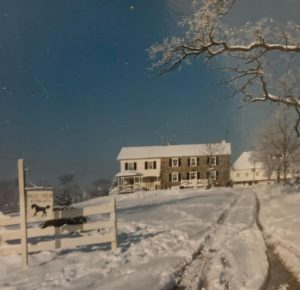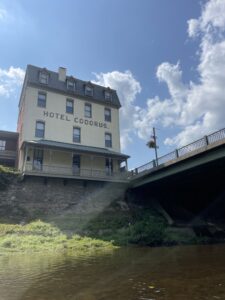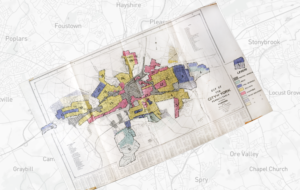‘Our hard, beautiful slate is just part of the story’
Coulsontown Cottages
28 Green Rd, Delta
The situation
The story of the Delta/Peach Bottom region is a story of “and.”
It’s about a ridge filled with slate and a river home to eagles above and fish below.
Its about slate used as outdoor building material and green marble quarried nearby for indoor use.
It tells of Welsh quarrymen and before them English and Scots-Irish and African Americans, and today commuters from Maryland and Amish farmers from Lancaster.
It’s set in one of the most remote places in York County and the mid-Atlantic region and houses nuclear and gas-powered generating plants.
It’s about a region that includes Pennsylvania and Maryland and the Mason-Dixon Line splitting Delta and Peach Bottom and Cardiff and Whiteford. Of course, the Line creates a border for the two states.
That’s a lot of complexity and history in a rural region that some might view as plain and simple.
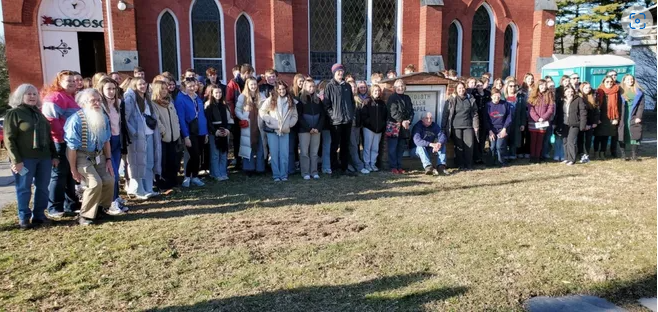
To choose just one point that helps define Delta-Peach Bottom, we’ll go with the 1840s when the Welsh came to the region to quarry slate, as they had in Wales for generations. The decline of the quarries came in the World War I era, but the Welsh influence remains today. When high school students from Wales visited Delta earlier this year, some felt that they were in their native country. Some found their hometowns inscribed on tombstones in Slateville Presbyterian Cemetery.
“The Welsh cracked the stone in one direction,” the region’s primary history book states as a kind of metaphor of the region’s complexity, “and split it in the other to make roofs that seem to last forever.”
If you want to know more about the Welsh and this region, please check out that book, “The River and the Ridge.” But for now, we’ve provided beautifully written essays from its pages, courtesy of two of its four authors: Roger B. Wilson and David B. Glenn.
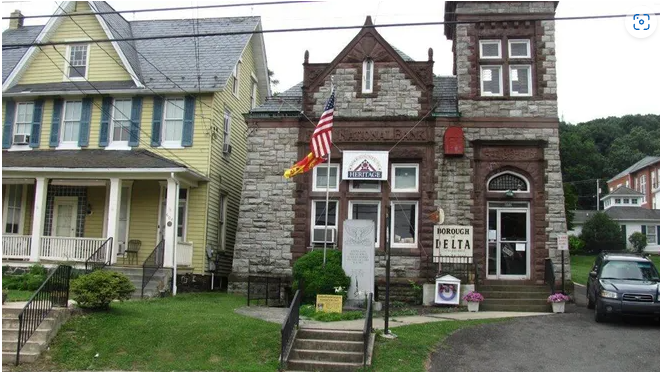
The witness
From Roger Wilson:
Many houses in the Delta, Peach Bottom Township, Cardiff, and Whiteford area have both a slate roof and a slate foundation. The story of this slate is also the foundation of our history. A twelve-mile ridge of slate is our dominant landform. The discovery of roofing slate in 1734 is the beginning of a unique history. A little more than one hundred years later, in the 1840’s, many people born in Wales traveled across the Atlantic Ocean to live here because of our slate. The Welsh cracked the stone in one direction and split it in the other to make roofs that seem to last forever.
Our hard, beautiful slate is just part of the story. The Susquehanna River is a mile-wide, physical barrier forming our eastern boundary. Much of our history is connected to “the river.” Delta Borough and Peach Bottom Township are in York County, Pennsylvania, with Muddy Creek forming the northern boundary of the township. The villages of Cardiff and Whiteford are in Harford County, Maryland. These two villages, one borough, and one township are the focus of this book. Starting where northern Maryland meets southern Pennsylvania at the Susquehanna River, the area extends about nine miles west, and three to five miles north of the Mason-Dixon Line, and about one mile south of that line.
We have farmland, forests, river hills, soapstone, slate, serpentine, and Wissahickon shist. Upon this land we built farms, roads, houses, schools, factories, and memories. We have plowed many an acre and dug hundreds of feet deep for rocky treasures. We have treasured stories too. We have family stories, farm stories, school stories, dam stories, quarry stories, electrifying stories, and atomic energy stories. Many of these stories are about how things change.
Given enough time everything changes. Shale can change to slate. The change into stone takes millions of years but eventually will have human consequences. Other changes depend on inventors who design new technology, bringing changes to how we live. Europeans arrived here in ocean-crossing ships with clocks, books, and iron weapons. They found a people with canoes and tools of stone. The natives were changed forever and so was our region.
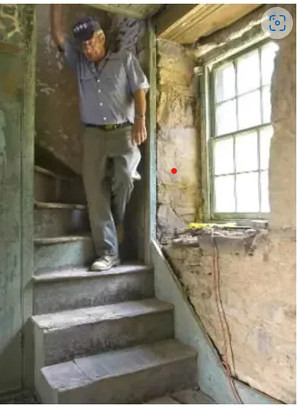
Looking back at the important changes that affected us, it went like this: a slate ridge formed; the first people came into the region; these people learned how to farm; Europeans came across an ocean; farms, villages, towns, cities, and the colonies were organized, and a dispute was settled with the Mason-Dixon line. And, in our area, many Scots-Irish came; slate was discovered; the first church was built, the first school, the first real road, and a stagecoach; later came the canal along the river; the slate industry; the railroad, and paved roads. Terrible, destructive wars came and went; the Great Depression; the slate industry declined; and nuclear power plant was built. Telegraph, radio, and television spread across the entire nation, followed by cable TV, computers, and the Internet.
This book is about the changes that shaped our region and created our history. Come, take a book walk with us. If you took a real walk along the Susquehanna River on the western shore past Coal Cabin, up through the river hills, striding over corn fields and peach orchards, past a couple of quarries, into the towns of Delta, Cardiff, and Whiteford, it would be only a few miles but could take several hours or several days. In this book we’ll show you old quarries, slate sidewalks, restored homes, green marble, the Rehoboth Welsh Church, our oldest school, stone cottages, a railroad trestle, fields of wheat and corn, piles of slate, a marker for Mason and Dixon’s line, Welsh pottery on slate gravestones, a slate clock, and the slate jail. Maybe you will take a real walk to see all these things yourself, to revisit old memories, or to marvel at some of our treasures for the first time.
+++
From David Glenn:
A river and a ridge have shaped our story. The river, the ridge, and our story all cross the state border between Pennsylvania and Maryland. Our story is set in southern York County, Pennsylvania and northern Harford County, Maryland. In many ways the history here is the same as any rural community in the East. For more than 300 years the same large forces have shaped most communities in the East: advances in agriculture, canals, railroads, and automobiles. Lives were changed by electric generators, electric motors, and electric lights. Formed by the Revolution, we were then shaped by the industrial revolution.
Everybody’s story is both the same and yet unique. What makes our story unique? It’s that ridge, a ridge of slate. A stone prized for roofing, and Welsh people who came to “talk to the stone,” make our story special. We have quite a slate story to tell: the earliest beginnings of digging out slate for roofing farm buildings in the 1730’s, the industrialization of the process in the 1800’s, the decline in the 1930’s, and the demise of the slate industry in the 1970’s. Our slate, known as Peach Bottom slate, earned a reputation of the highest quality. The slate is, we believe, the best in the world.
Slate has been a large part of the story here for 240 years. Modern day visitors to our area marvel at this legacy. We have slate roofs and slate foundations. We have slate sidewalks, slate tombstones, a slate clock and slate jail. We have huge piles of slag slate and abandoned water-filled quarries along what we call the “Ridge.”
Delta and Peach Bottom lie in the Piedmont, that area between the coastal plain and Appalachian Mountains. We have rolling hills cut by wooded stream valleys that become deep and steep as they approach the Susquehanna River. The Susquehanna has shaped our history in powerful ways: as a natural boundary, as transportation, as a source of food and electrical energy. As we shall see, it is still shaping our lives today.
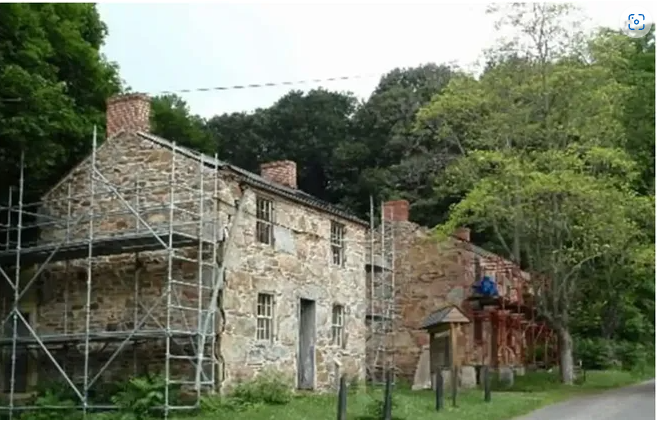
Native Americans, of course, were the first inhabitants of this area, from roughly 8000 B.C. to the early 1700’s. Hunters, gatherers, and farmers, they had a Stone Age lifestyle. Thousands of their stone artifacts have been found but certainly not all of them. Stone hammers, spear points, arrowheads can still turn up almost anywhere. Those Native Americans left us names such as Susquehanna, Susquehannocks, Conestoga, and Conowingo.
The first European settlers in our area were a few folks of English descent, coming up from Maryland. They took up land in Peach Bottom Township under patents from the Calvert family beginning in 1719. The most notable of them is John Cooper whose many descendants live in our area today.
Next came the Scots-Irish, coming after the William Penn family made the land west of the Susquehanna River open for colonization. The Scots-Irish were encouraged by the Penn family to provide a buffer between the peaceable Germans and Quakers in the north and Marylanders to the south. Like their English neighbors in Maryland, the Scots-Irish came to acquire land, and make a living in agriculture.
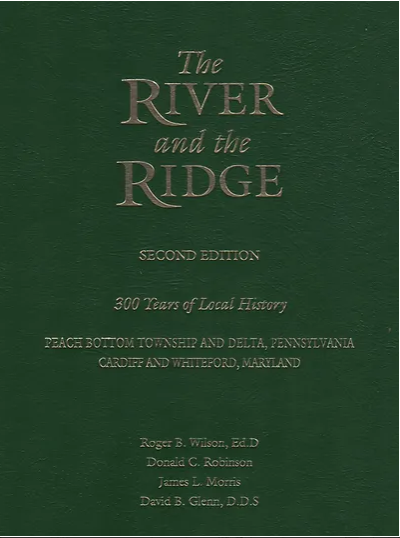
In the 1840’s Welsh families made the long and often difficult journey across the Atlantic Ocean to settle in our area. These quarrymen and their families came for the jobs and the opportunity to live a better life in the United States. They were encouraged to come because they knew how to quarry slate.
In the 1960’s another Maryland group came to our area. These folks were mostly from Baltimore moving north, seeking rural living and beauty, peace, and quiet to be found here.
The most recent arrivals are a small but significant community of Amish from Lancaster County. Just like those early Scots-Irish, they cross the Susquehanna from the east to the west. Mostly farmers and carpenters, they are literally being crowded out of their home county. Here they can find farmland and rural living. The horse, the buggy, and the one-room schoolhouse have made a comeback.
The questions
Delta and its region might seem like a simple rural area. But in York County’s story, there’s a complexity that underlies even its bucolic landscapes. After reading about the many layers to Delta’s history, which story interests you the most?
Also, the Delta-Peach Bottom area is defined by Mother Nature. The showcase natural resource – slate – shaped the culture ranging from architecture to incomes. This story highlights how our geography shapes us. We are connected to the land and rely on it more than we realize. What other areas in York County have been shaped by the environment, historically speaking?
Related links and sources: “The River and the Ridge 300 Years of Local History (Peach Bottom Township and Delta, Pennsylvania, Cardiff and Whiteford, Maryland)” by David B. Glenn, Roger B. Wilson, Donald C. Robinson, James L. Morris; “Welsh students learn about the slate-rich Delta ridge and the quarrymen who worked it” by James McClure. Photos: Courtesy of YDR, except for Welsh students, from Donald C. Robinson. Bottom photo, York Daily Record. Please note: One of the authors, James L. Morris, passed away recently, in 2022.
— By JAMIE NOERPEL and JIM McCLURE

